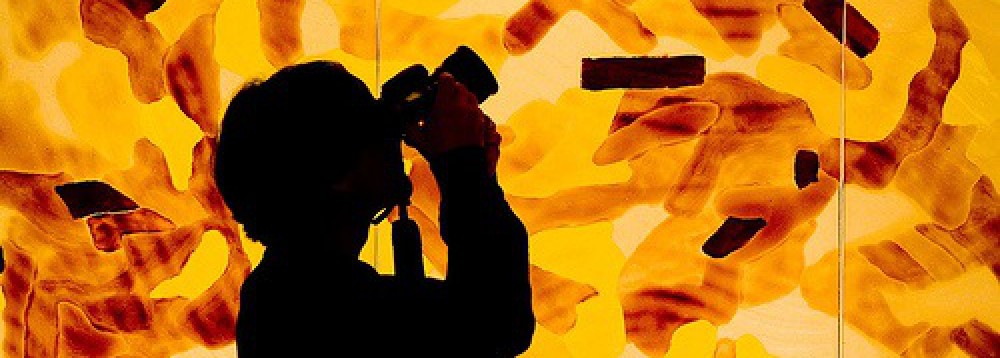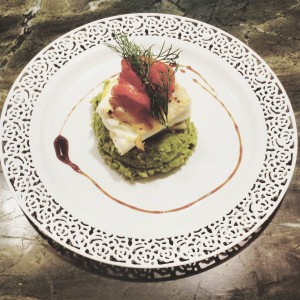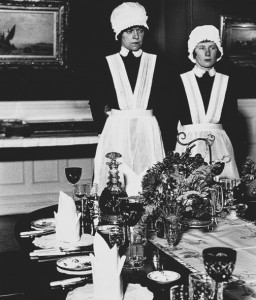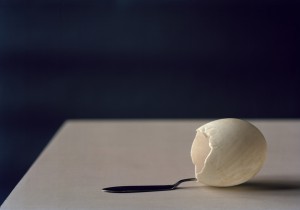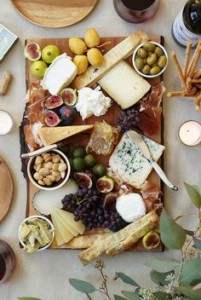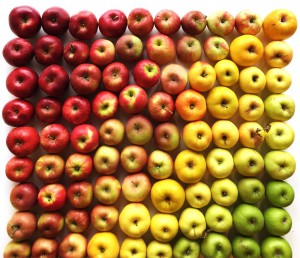One of the first things that you should consider when you shoot the food is that beauty is in the details.Texture plays very important rule in food photography.It impact the way food looks or tastes. I think that,People are incredibly sensitive to texture.What can texture do for a food photo? Texture can do a lot for a food photo. When we look a t food pictures. A textured background can be an important element of the overall image in food photography.Texture can enhance the quality of the image, provide it with a feeling of age, and make it interesting.
Tag Archives: food
Homework #4: Food and Status in History
The twentieth-century photographer Bill Brandt (1904-1983) took photographs of the servants working in wealthy households and coal miners in modest dwellings. His photographs often juxtaposed the working class and those with privilege. The images show the abundance of the upper classes, including the banker whose servants are pictured here about to serve dinner at a country home. Historically, the number of servants has long been equated to the status of the household, more help reflects greater importance. One of the most extravagant displays of status through food was the royal court of the French King Louis XIV at Versailles outside Paris. Watch an excerpt from a film by Roberto Rossellini, La Prise du Pouvoir par Louis XIV aka The Rise of Louis XIV (1966) that recreates the dinner service of Louis XIV. The excerpt is in French with English subtitles. Note how many cooks and servants are required to serve one man. In our own times, have you noticed how food can communicate status? at parties? weddings? or even picnics? Post an example of how food can be make a social statement.
Watch the excerpt from Rossellini’s film here.
PLEASE SUBMIT YOUR POSTS BY MONDAY OCTOBER 26, 2015.
Homework #3: Photographing the Texture of Food
tex·ture /ˈteksCHər/ noun
|
In class we discussed the wet-plate collodion process of mid-nineteenth century photography. The photo historian Helmut Gernsheim once referred to this collodion era as the “culinary period” of photography (Gernsheim, 1969, 258). Aside from the sticky collodion that photographers like Roger Fenton and Mathew Brady applied to their glass plates, photographers tried all sorts of ingredients to keep the collodion moist for longer periods of time, including treacle, malt, raspberry juice, milk, licorice juice, chestnut juice, beer, tea, and coffee.
For this week, I ask you to think about the idea of texture in food, and how does one capture texture in a photograph. The key to communicating texture in photography is to pay careful attention to detail. In this week’s homework, you get to practice taking a photograph, re-sizing it, and uploading it to our class website. For example, look at the photograph by contemporary photographer Olivier Richon and note how it gives you a sense of the texture of an egg, an object that we’ll be thinking about a lot this semester. Take a food-related photo (something you made or saw), resize it (follow the directions on how to resize you photo to smaller than 600 to 700 pixels here) and upload your photo to the class site with a short passage describing the texture of your food item.
In class, we also talked about the albumen process that makes use of egg whites. What happened to all those egg yolks? You can click here to see a recipe for a 19th-century photographer’s cheesecake.
PLEASE SUBMIT YOUR POSTS BY MONDAY OCTOBER 19, 2015.
Ahmet D. Civil War
Image
I think coffee was a necessary drink to keep the soldiers aware and heated also a big psychological boost for them. I think it was a great way to motivate the soldiers, I believe coffee was the only thing that reminds the home town to the soldiers and coffee was the best thing on the menu. It is very expensive and very hard to feed an army. They have to use very simple food and must be easy to cook and carry it one place to another. Also food has to stay good for a long time. You do not want to poison your soldiers by mistake during the war. The most fascinating thing about the Civil War is that they learnt very quickly how to manage their food and how to cook it.
The food that I cannot live without is the NUTELLA. I love it. 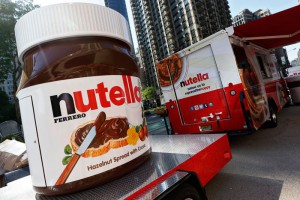
Homework #2
I honestly think caffeine is more mental then anything else. In the time of the Civil War, coffee was more something to look forward to, as it is still today. Since I’ve worked for Starbucks for over 6 years now, I’ve encountered some odd people. One thing that I’ve learned about the coffee we brew is the lighter a coffee is roasted the more caffeine the beans hold. Almost every day I have the same conversation about our blonde, medium, and dark roasts. A lot of people will say how the blonde never wakes them up how they need that dark roast to keep them going. I always politely explain to them that even though it isn’t a great difference but the blonde roast contains more caffeine then the darker roasts and why. Sometimes people will take the info and go with it, but others think I don’t know what I’m talking about. This is why I believe that coffee is just placebo to remind you that you have to be up and get through this day.
I can get through this day now that I got my coffee.
I know I’ll be alert once I’m out there on the battlefield now that I’ve had some coffee.
-Peter Tapia
P.S. I Love Cheese and I can’t imagine a world without it. Give me a good Cheese and Meat plate and I’m happy… add some wine and you’ve made my day.
Felecia Stuart: The Food Photographing Generation.
It’s no secret that photography has taken over this generation. With the ongoing development of technology, and the growing dependancies on smartphones, you almost always have a camera available when needed. That being said, cell phones are being used less for direct contact and more for communicating via social media. Things like Facebook, Twitter, Snapchat, and especially Instagram are changing the way we express ourselves to the world. Instagram specifically targets photography. You take a photo and upload it within seconds and almost immediately after, you get a notification of someone liking it. Like the “Iphone 5” video showed, it gives you this false sense of fulfillment. I myself am guilty of posting photos on Instagram and waiting for the likes to add up. And though I have never posted pictures of food, I do follow several food blogs. I follow blogs that post recipes and blogs that give recommendations to different restaurants around NYC, you can kind of say its purely educational. I think the only time I personally take photos of my food, its food that I make and pictures of the steps to get to it. Maybe its because i’m not that great a photographer, or maybe its because I don’t really get the point, but I don’t see myself posting a picture of my dinner anytime soon. 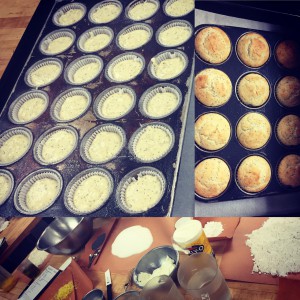
Looking at Food, Looking at Photography
Welcome! If you’re here, then you’re probably enrolled in “The Art of Food” Learning Community. We are three classes that will meet together in the Fall 2015 semester. All students are enrolled in Prof Cheng’s History of Photography ARTH1100-LC01 class and either Prof Garcelon’s Culinary I HGMT 1203-LC22 or Prof Jacus’s Baking & Pastry I HGMT 1204-LC28 class. This website is where you’ll submit much of your discussion and work for my History of Photography class. Although I’ll be grading your work, Professors Garcelon and Jacus will be looking in too, as well as commenting and participating. You will get many opportunities to think about what you produce in Culinary I and Baking & Pastry I in artistic terms, and better understand the history of the ever-changing medium of photography.
I look forward to meeting you in class. Look around, and check back frequently as I develop our class site, and please do not hesitate to contact me.
